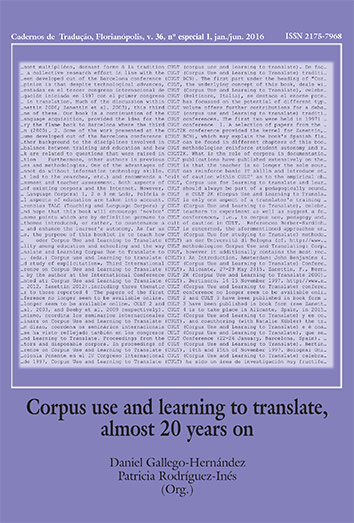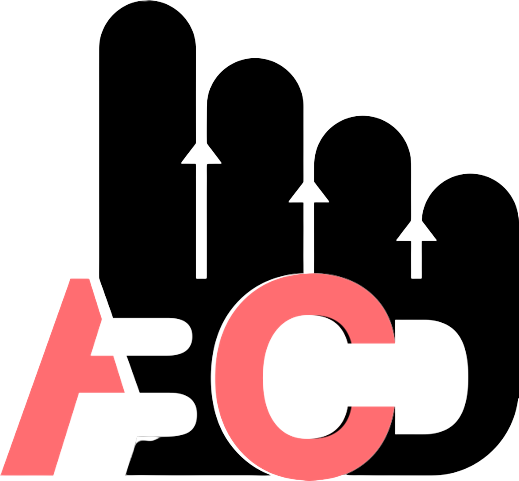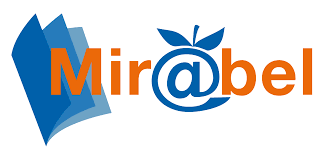Discovery learning in the language-for-translation classroom: corpora as learning aids
DOI:
https://doi.org/10.5007/2175-7968.2016v36nesp1p14Resumo
This contribution reviews the idea of discovery learning with corpora, proposed in the 1990s, evaluating its potential and its implications with reference to the education of translators today. The rationale behind this approach to data-driven learning, combining project-based and form-focused instruction within a socio-constructivistically inspired environment, is discussed. Examples are also provided of authentic, open-ended learning experiences, thanks to which students of translation share responsibility over the development of corpora and their consultation, and teachers can abandon the challenging role of omniscient knowledge providers and wear the more honest hat of "learning experts". Adding to the more straightforward uses of corpora in courses that aim to develop thematic, technological and information mining competences – i.e., in which training is offered in the use of corpora as professional aids –, attention is focused on foreign language teaching for translators and on corpora as learning aids, highlighting their potential for the development of the three other European Master's in Translation (EMT) competences (translation service provision, language and intercultural ones).
Referências
Aston, Guy. “Foreword.” In: Beeby et al. (eds.). Corpus Use and Translating: Corpus use for Learning to Translate and Learning Corpus Use to Translate. Amsterdam: Benjamins, 2009. IX-X.
Beeby, Allison, Patricia Rodríguez-Inés and Pilar Sánchez-Gijón, eds. Corpus Use and Translating: Corpus use for Learning to Translate and Learning Corpus Use to Translate. Amsterdam: Benjamins, 2009.
Bernardini, Silvia. “Corpora in the Classroom.” In: John McHardy Sinclair (ed.). How to Use Corpora in Language Teaching. Amsterdam: Benjamins, 2004. 15-36.
---. “Corpus-aided Language Pedagogy for Translator Education.” In: Malmkjær (ed.). Translation in Undergraduate Degree Programmes. Amsterdam: Benjamins. 97¬¬-111.
Boulton, Alex. “Testing the Limits of Data-driven Learning: Language Proficiency and Training.” ReCALL 21.1 (2009): 37-54.
---. “Data-driven Learning: The Perpetual Enigma.” In: Stanisław Goźdź-Roszkowski (ed.). Explorations across Languages and Corpora. Frankfurt: Peter Lang, 2011. 563-580.
Braun, Sabine. “Integrating Corpus Work into Secondary Education: From Data-driven Learning to Needs-driven Corpora.” ReCALL 19.3 (2007): 307-328.
Carreres, Ángeles. “Translation as a Means and as an End: Reassessing the Divide.” The Interpreter and Translator Trainer 8.1 (2014): 123-135.
EMT expert group. “Competences for Professional Translators, Experts in Multilingual and Multimedia Communication.” 2009. [http://ec.europa.eu/dgs/translation/programmes/emt/key_documents/emt_competences_translators_en.pdf]
Frankenberg-Garcia, Ana. “Raising Teachers’ Awareness of Corpora.” Language Teaching 45.4 (2010): 475-489.
Flowerdew, Lynne. “Data-driven Learning and Language Learning Theories.” In: Leńko-Szymańska and Boulton (eds.). Multiple Affordances of Language Corpora for Data-driven Learning. Amsterdam: Benjamins, 2015. 15-36.
González Davies, María. “Undergraduate and Postgraduate Translation Degrees: Aims and Expectations.” In: Malmkjær, Kirsten (ed.). Translation in Undergraduate Degree Programmes. Amsterdam: Benjamins, 2004: 67-81.
Halliday, Michael and Christian Matthiessen. An Introduction to Functional Grammar (4th edition). London: Routledge, 2014.
Johns, Tim. “From Printout to Handout: Grammar and Vocabulary Teaching in the Context of Data-driven Learning.” ELR Journal 4 (1991): 27-45.
Hanks, Patrick. “The Corpus Revolution in Lexicography.” International Journal of Lexicography 25.4 (2012): 398-436.
Hatim, Basil. Teaching and Researching Translation (2nd ed.). London and New York: Routledge, 2013.
Kennedy, Graheme. “Preferred Ways of Putting Things (with Implications for Language Teaching).” In: Jan Svartvik (ed.). Directions in Corpus Linguistics. The Hague: Mouton de Gruyter, 1992. 353-373.
Kenny, Dorothy. Lexis and Creativity in Translation: A Corpus-based Study. London and New York: Routledge, 2001.
Lanstyák, István and Heltai, Pál. “Universals in Language Contact and Translation.” Across Languages and Cultures, 13.1 (2012): 99-121.
Laviosa, Sara. Translation and Language Education. London: Routledge, 2014.
Leech, Geoffrey. “Teaching and Language Corpora: A Convergence.” In: Ann Wichmann, Steven Fligelstone, Anthony McEnery and Gerry Knowles (eds.). Teaching and Language Corpora. London: Longman, 1995. 1-23.
Leńko-Szymańska, Agnieszka and Alex Boulton, eds. Multiple Affordances of Language Corpora for Data-driven Learning. Amsterdam: Benjamins, 2015.
Louw, Bill. “Irony in the Text or Insincerity in the Writer? The Diagnostic Potential of Semantic Prosodies.” In: Mona Baker, Gill Francis and Elena Tognini-Bonelli (eds.). Text and Technology: In Honour of John Sinclair. Amsterdam: Benjamins, 1993. 157-176.
Malmkjær, Kirsten, ed. Translation in Undergraduate Degree Programmes. Amsterdam: Benjamins, 2004.
McCarthy, Michael and Felicity O’Dell. English Collocations in Use. How Words Work Together for Fluent and Natural English. Cambridge: Cambridge University Press, 2006.
Mitchell-Schuitevoerder, Rosemary. A Project-based Syllabus Design. Innovative Pedagogy in Translation Studies. PhD thesis, Durham University, 2014. [Online: http://etheses.dur.ac.uk/10830/ ]
Molés-Cases, Teresa and Oster, Ulrike. “Webquests in Translator Training: Introducing Corpus-based Tasks.” In: Leńko-Szymańska and Boulton (eds.). Multiple Affordances of Language Corpora for Data-driven Learning. Amsterdam: Benjamins, 2015. 199-224.
Mossop, Brian. “What should be Taught at Translation School?” In: Anthony Pym, Carmina Fallada, José Ramón Biau and Jill Orenstein (eds.). Innovation and E-learning in Translator Training. Tarragona: Intercultural Studies Group, Universitat Rovira i Virgili, 2003. 20-22.
Nunan, David. The Learner-centred Curriculum. Cambridge: Cambridge University Press, 1988.
Palmer, Harold E. Second Interim Report on English Collocations. Tokyo: Kaitakusha, 1933.
Pym, Anthony, Kirsten Malmkjaer, and María del Mar Gutierrez-Colon Plana. Translation and Language Learning: The Role of Translation in the Teaching of Languages in the European Union. Luxembourg: Publications Office of the European Union, 2013.
Rodríguez-Inés, Patricia. “Evaluating the Process and not just the Product when using Corpora in Translator Education.” In: Beeby et al. (eds.). Corpus Use and Translating: Corpus use for Learning to Translate and Learning Corpus Use to Translate. Amsterdam: Benjamins, 2009. 129-149.
Sánchez-Gijón, Pilar. “Developing Documentation Skills to Build Do-it-yourself Corpora in the Specialised Translation Course.” In: Beeby et al. (eds.). Corpus Use and Translating: Corpus use for Learning to Translate and Learning Corpus Use to Translate. Amsterdam: Benjamins, 2009. 109-127.
Schmidt, Richard W. “The Role of Consciousness in Second Language Learning.” Applied Linguistics 11 (1990): 129-158.
Seidlhofer, Barbara. Controversies in Applied Linguistics. Oxford: Oxford University Press, 2003.
Sinclair, John McHardy, ed. Looking up: An Account of the COBUILD Project in Lexical computing and the Development of the Collins COBUILD English Language Dictionary. London: Harper Collins, 1987.
---. “The Search for Units of Meaning.” Textus 9.1 (1996): 75-106.
Vandepitte, Sonia. “Research Competences in Translation Studies.” Babel 59.2 (2013): 125-148.
Widdowson, Henry. “The Description and Prescription of Language.” In: James E. Alatis. (ed.). Georgetown University Roundtable on Language and Linguistics. Washington D.C.: Georgetown University Press. 11-24.
Downloads
Publicado
Como Citar
Edição
Seção
Licença
Autores têm autorização para assumir contratos adicionais separadamente, para distribuição não exclusiva da versão do trabalho publicada nesta revista (ex.: publicar em repositório institucional ou como capítulo de livro, com reconhecimento de autoria e publicação inicial nesta revista).





















































